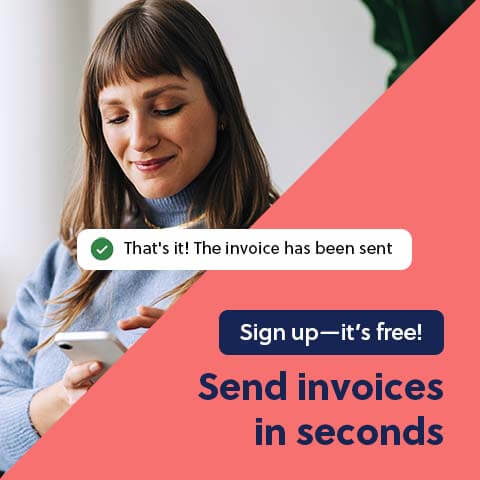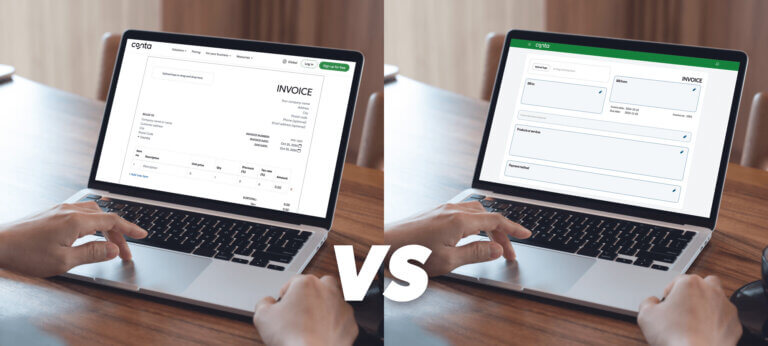A disputed invoice is an invoice your client doesn’t want to pay. There can be many reasons for this. In this article, we’ll take a look at why disputes happen and show you how to deal with them.
It’s common for business owners, freelancers and contractors to have to deal with unpaid invoices, but when you’re facing a disputed invoice, it can seem difficult to find a good solution.
Read on to find out what the common disputes are and how to avoid them and—if you do find yourself facing a dispute—how to effectively resolve it.
What is a disputed invoice?
When a client objects to paying the invoice, it’s called a disputed invoice.
One of the common reasons clients don’t want to pay, is that they’re not satisfied with the quality of the products or services you’ve provided. They might point to differences in the delivered service or product versus their expectations or the terms set out in the contract, and they might refuse to pay until the matter is addressed and resolved.
Another common reasons for disputed invoices is disagreements over the price. The discrepancy might be due to misunderstandings, invoicing errors, or maybe the scope of a project increased beyond what was initially agreed upon. Clients might point out that the invoiced amount exceeds the agreed-upon amount, and refuse to pay until a new invoice is issued.
Here are some other common reasons for disputed invoices:
- Administrative errors: Disputes arising from mistakes in the billing process, such as duplicate invoices or incorrect information, are common causes of disputed invoices.
- Late or incomplete delivery: Delays or incomplete orders can result in clients withholding payment.
- Product complaints: Clients may dispute an invoice if the received product is damaged, incomplete, or of poor quality.
Avoid disputed invoices with Conta
Invoicing errors can lead to disputes. Conta streamlines your invoicing process and helps you avoid errors. Just enter client details, products and prices, and effortlessly send your professional invoice. The next time you send an invoice, client details, product information and prices can be autofilled with the click of a button.
How does a disputed invoice affect your business?
Disputed invoices can have a big impact on your business: It can lead to cash flow disruptions, operational challenges, and strained client relationships.
Cash flow disruptions
20 percent of small business owners say that unpaid invoices would mean having to refuse new business.
Disputed invoice lead to delayed or withheld payments, and that will disrupt your ability to pay your suppliers for goods and services, pay salaries, and make investments.
Operational challenges
The time and resources spent on resolving disputed invoices will divert focus from core operations, which will impact overall productivity.
Strained client relationships
Disputes over invoices can strain client relationships. It’s important to resolve these disputes in a quick and professional manner to maintain trust and good rapport with clients. If you don’t address them quickly, it might lead to the loss of valuable client and harm you or your business’ reputation.
How do I resolve a disputed invoice?
1. Contact the client
When faced with a disputed invoice, communication is key. Reach out to the client in a professional manner to figure out what’s causing the dispute. Usually, disputes are caused by dissatisfaction with the products or services, the invoice amount, or errors on the invoice.
You can’t take the necessary steps to resolve the issue until you understand what’s causing the dispute. Make it clear to the client that you’re committed to resolving the problem in a way that both you and your client are satisfied with.
Keep records of your communication with the client; it might be important if the dispute escalates.
Pro tip: Resolve disputes with better communication
78 percent of c-level executives say their payment disputes could have been alleviated with better communication. Reach out to your client via email or phone, or even meet up with them in person. It might turn out to be a simple misunderstanding.
With the free invoicing software Conta, you can resend invoices easily to remind your customers about payments.
2. Check the contract
A disputed invoice is essentially a contractual dispute. Once you understand the issue, review any written agreements you have with the customer, and make sure that you’ve fulfilled all the obligations outlined in the contract.
If there’s a dispute resolution clause in the agreement, follow the steps outlined there in order to resolve the dispute. If you don’t have a formal written agreement, review the email correspondence between you and your client.
3. Propose a resolution
After narrowing down the issues and reviewing the written agreements, propose a solution to the client. You might have to compromise. Consider the big picture: do you want to maintain a good relationship with the customer? Are they likely to purchase from you in future? If so, it might be worth considering options such as replacing the goods, redelivering the services, or offering a discounted price.
Proposing a fair resolution also demonstrates your commitment to resolving the issue and makes it clear that you operate in a professional way.
4. Consider involving a third party
If direct communication and negotiation doesn’t resolve the issue, you can consider involving a neutral third party. Mediation is a structured negotiation process facilitated by an independent mediator. The main goal is to help the involved parties reach a mutually agreeable resolution.
Mediation is an effective alternative to formal court proceedings, and it’s often more cost-efficient as well.
5. Take legal action
Legal action should be your last resort, as it is both costly and time-consuming. If all other attempts fail, and you don’t want to write off the invoice, you can consider taking legal action. However, you should seek legal advise first, to see if you’re likely to succeed with your claim and to get an overview of the costs involved.
For smaller amounts, consider lower courts or tribunals to save on court costs. If the amount is very small, it’s also possible to write off the invoice rather than spending more time and money on following up with the client.
Tips for preventing future invoice disputes
Resolving a disputed invoice is not just about finding a solution for the current disagreement, it’s also an opportunity for you to improve your process to avoid similar issues in the future. Not only will this save you time and money, but it will demonstrate to your clients that you acknowledge their feedback and care about their satisfaction. It also cultivates a culture of continuous improvement in your business, and lets you stay ahead of potential challenges.
Here are the steps you should take:
Find the root cause and fix it
Identify the underlying causes of disputes, whether it’s due to miscommunication, invoicing errors, or issues with your products and services. Then take action to resolve those issues: Establish a better invoicing process, improve your delivery, or make changes to your products and services.
Improve your communication
Improve the communication in your invoices, contracts, and emails in order to avoid misunderstandings. Make sure to use clear and concise language. Avoid complicated terms that your clients might not understand.
Build better client relationships
Strengthen relationships by seeking customer feedback and demonstrating a commitment to better services. It’s also a good idea to send thank-you notes after a purchase, and to give discounts to repeat clients.
Implement an efficient billing system
To reduce the likelihood of disputed invoices, it’s important to have streamlined billing process. Make sure to look for a way to:
- Automate invoicing: Automated processes, such as recurring invoices and payment reminders help minimize human errors and can save you a lot of time. With automation, routine tasks such as invoice generation, data entry, and calculations become seamless.
- Generate reports and overviews: Opt for a billing solution that provides real-time tracking and reports. This allows you to track the status of invoices, follow up on missing payments, and generate reports. Access to up-to-date financial data helps you to make informed decisions and avoid pitfalls.
- Make invoicing easy: Select a billing system with a user-friendly interface to make it easier for you and your team. An intuitive dashboard and a straightforward invoice creator reduces the learning curve for staff members and minimizes the risk of errors.
Conta is a 100% free invoicing software for small businesses and freelancers. With Conta, you can generate an unlimited amount of sleek and professional invoices, which makes it an ideal choice if you want to simplify your invoicing.

Review your payment terms
Avoid uncertainties and misunderstandings by reviewing and updating your payment terms. It’s important that payment terms, deadlines, and late payment fees are clearly communicated. Keep an open line of communication with clients so that you can easily resolve any issues.
Include information about dispute procedures in your contracts
To proactively handle potential disputes, consider including dispute procedures in your contracts. Specify which communication channels should be used in the case of disputes, establish timeframes for resolution, and outline what will happen in case the dispute is not resolved. Establishing procedures from the start will simplify the resolution process and help prevent conflicts.
You should also sign contracts online for faster turnaround and for easier access to the document after it’s been signed.
Frequently asked questions
Try both sending follow-up emails, letters, and calling the client. Clearly state the urgency and offer alternative communication channels, such as a dedicated phone line or a specific contact person. If your attempts to contact the client are unsuccessful, you might have to look into other alternatives.
In cases where there’s no formal written agreement, review any email correspondence, quotes, or documents that can serve as evidence of the agreement. While a written contract is ideal, other forms of documentation can still support you in resolving the dispute.
Generally, involving a third party requires the consent of both parties. However, if your contract includes a mediation clause, you might be able to proceed with mediation even without the client’s consent. It’s a good idea to seek legal advice before taking this step.
Review incidents that led to disputed invoices, evaluate your performance, and implement changes based on what you learn. You can get suggestions for improvements via regular team meetings, customer feedback surveys, and by doing a review of your invoicing, delivery, and communication processes.





